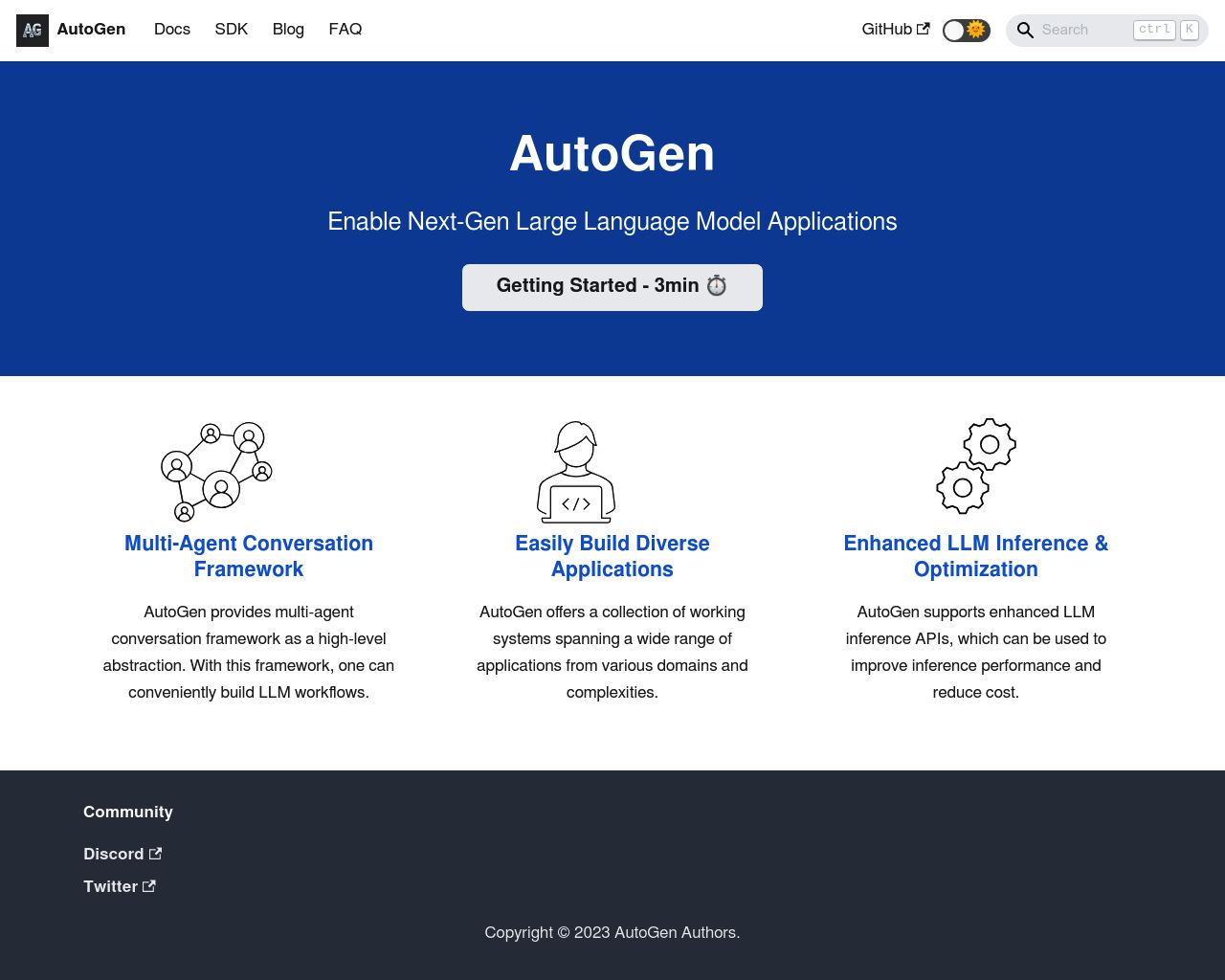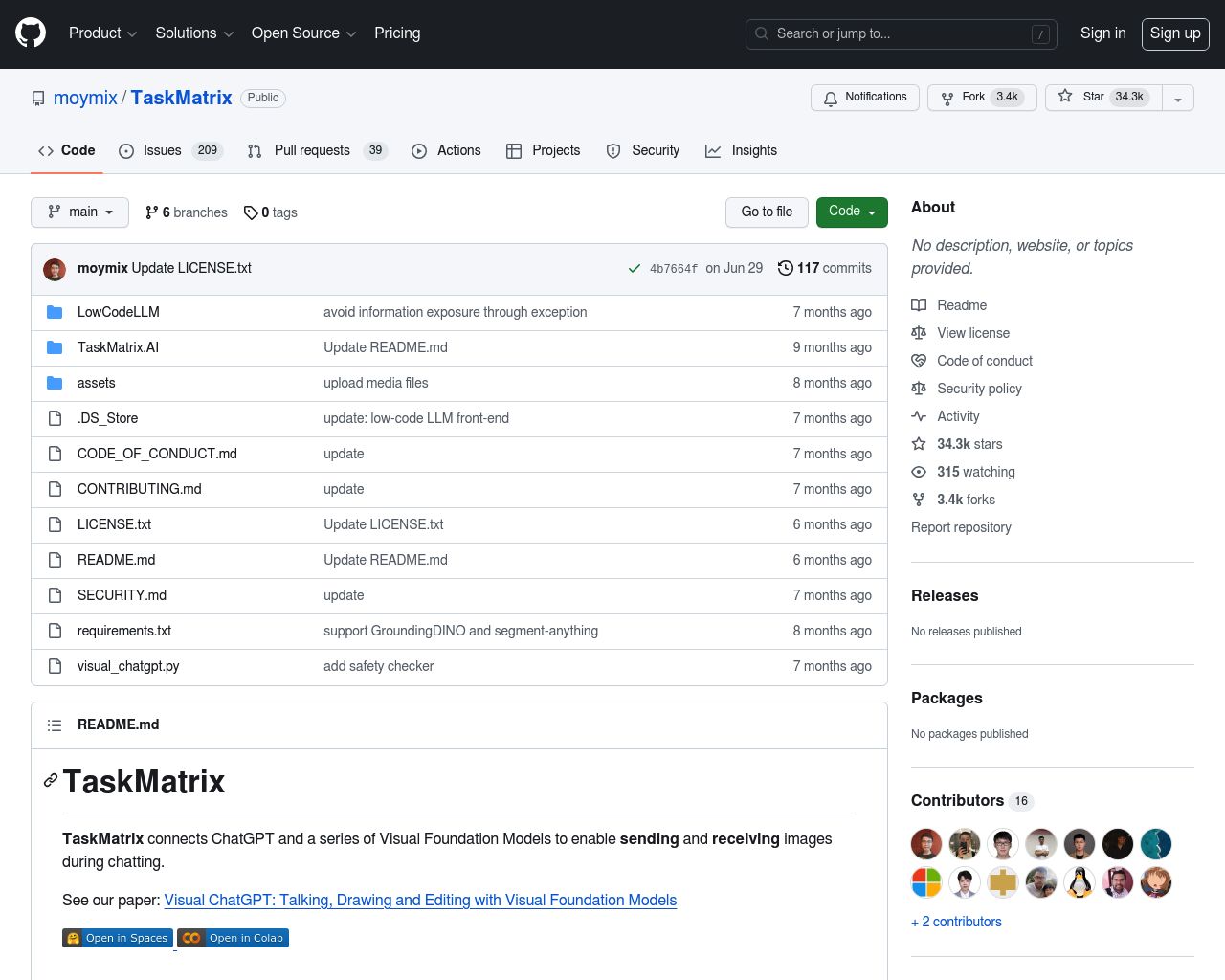Comparing AutoGen Vs TaskMatrix: Which is the Superior Solution?
AI agent development platforms AutoGen and TaskMatrix push the boundaries of what’s possible with large language models and API integrations. AutoGen specializes in multi-agent collaboration and optimized LLM performance, while TaskMatrix excels at connecting foundation models to specialized APIs for diverse task execution. This comparison examines their unique approaches, strengths, and limitations across key areas like ease of use, deployment options, and security features.
We’ll also introduce SmythOS, a powerful alternative that combines the best of both worlds with its intuitive no-code interface and enterprise-grade capabilities. Whether you’re a developer seeking advanced AI tools or a business leader exploring AI solutions, this guide will help you navigate the landscape of AI agent platforms and choose the right fit for your needs.
AutoGen Overview
AutoGen empowers developers to create sophisticated Large Language Model (LLM) applications through multi-agent conversations. This open-source framework enables customizable AI agents to collaborate, solving complex tasks autonomously or with human guidance.


AutoGen maximizes LLM performance with enhanced inference capabilities, including tuning, caching, error handling, and templating. These features optimize the utility of resource-intensive models like GPT-4. The platform supports both fully autonomous operations and human-in-the-loop problem-solving, adapting to various application needs.
AutoGen empowers developers to create sophisticated Large Language Model (LLM) applications through multi-agent conversations.
Developers benefit from AutoGen’s flexibility in agent customization, allowing integration of LLMs, human inputs, and external tools. The framework demonstrates effectiveness across diverse applications, from automated task solving and code generation to continual learning and complex problem-solving in group chats.
AutoGen includes essential developer tools such as debugging features and API call logging, crucial for diagnosing and optimizing LLM-based systems. The platform also offers EcoOptiGen, a cost-effective technique for tuning large language models, underscoring its focus on efficiency.
While AutoGen excels in multi-agent collaboration and LLM optimization, it lacks a visual builder or no-code editor. This limitation may present challenges for users seeking a more intuitive, code-free development experience. Additionally, the framework’s power comes with a steeper learning curve, potentially requiring more time investment for those new to LLM application development.
TaskMatrix Overview
TaskMatrix empowers developers to create AI agents capable of executing complex tasks through seamless integration of foundation models and specialized APIs. This open-source platform, developed by Microsoft, enhances the capabilities of models like GPT-4 by connecting them to a vast ecosystem of specialized tools and services.
TaskMatrix excels at bridging the gap between general-purpose AI and task-specific functionality. Its core components include a conversational foundation model for understanding user inputs, a comprehensive API platform, an intelligent API selector, and an action executor. These elements work in concert to interpret user instructions, generate executable code, and carry out tasks using the most appropriate APIs.
TaskMatrix excels at bridging the gap between general-purpose AI and task-specific functionality.
Developers benefit from TaskMatrix’s ability to handle both digital and physical tasks, its lifelong learning capabilities, and its provision of interpretable responses. The platform supports multimodal interactions, enabling agents to process text, images, and other data types. TaskMatrix’s strength lies in fostering multi-agent collaboration, allowing teams of AI agents to work together on complex problems.


While TaskMatrix offers powerful features for AI development, it lacks some conveniences found in other platforms. The absence of a visual builder or no-code editor means users need coding expertise to fully leverage its capabilities. Additionally, TaskMatrix does not provide built-in solutions for data encryption, IP control, or deployment as webhooks or scheduled agents.
TaskMatrix’s integration capabilities shine, supporting OAuth authentication and connections to various APIs and RPA tools. The platform enables the deployment of agents as APIs and GPTs, facilitating flexible implementation across different use cases. For developers and organizations looking to push the boundaries of AI capabilities through intricate agent interactions and API integrations, TaskMatrix presents a robust and versatile solution.
Feature Comparison
AutoGen and TaskMatrix offer distinct approaches to AI agent development, each with unique strengths and limitations. AutoGen excels in multi-agent collaboration, providing a flexible framework for creating conversational AI systems. Its enhanced Large Language Model inference capabilities optimize performance of models like GPT-4. TaskMatrix stands out for its seamless integration of foundation models with specialized APIs, enabling execution of both digital and physical tasks.
While both platforms support autonomous agents and multi-agent collaboration, TaskMatrix’s API-centric approach provides a more extensive ecosystem for task execution. AutoGen focuses on conversational agents, whereas TaskMatrix offers broader functionality across various domains. In terms of core components, AutoGen lacks a visual builder and no-code editor, requiring more technical expertise. TaskMatrix similarly requires coding knowledge but provides a comprehensive API platform for enhanced integration capabilities.
Regarding security features, both platforms have limitations. Neither explicitly mentions data encryption or IP control functionalities. However, TaskMatrix’s emphasis on API integration suggests potentially stronger security measures for enterprise deployments. AutoGen and TaskMatrix both support OAuth authentication, but TaskMatrix’s extensive API ecosystem may offer more robust options for securing agent interactions across diverse systems.
Feature Comparison Table
| AutoGen | TaskMatrix | SmythOS | |
|---|---|---|---|
| CORE FEATURES | |||
| Visual Builder | ❌ | ✅ | ✅ |
| No-Code Options | ❌ | ✅ | ✅ |
| Agent Work Scheduler | ❌ | ✅ | ✅ |
| SECURITY | |||
| Constrained Alignment | ❌ | ✅ | ✅ |
| IP Control | ❌ | ✅ | ✅ |
| COMPONENTS | |||
| Data Lakes | ❌ | ❌ | ✅ |
| DEPLOYMENT OPTIONS (EMBODIMENTS) | |||
| Staging Domains | ❌ | ✅ | ✅ |
| Production Domains | ❌ | ✅ | ✅ |
| Deploy as Scheduled Agent | ❌ | ✅ | ✅ |
| DATA LAKE SUPPORT | |||
| Hosted Vector Database | ❌ | ❌ | ✅ |
| Sitemap Crawler | ❌ | ❌ | ✅ |
| YouTube Transcript Crawler | ❌ | ❌ | ✅ |
Best Alternative to AutoGen and TaskMatrix
SmythOS stands out as the superior alternative to AutoGen and TaskMatrix for AI agent development. Our platform offers a comprehensive solution that combines ease of use with powerful features, making it ideal for businesses and developers alike. SmythOS’s visual drag-and-drop interface enables rapid agent creation without extensive coding knowledge, a capability lacking in AutoGen and TaskMatrix.
We provide a robust ecosystem of pre-built API integrations and templates, significantly reducing setup time and allowing users to focus on innovation. Our multi-agent orchestration capabilities surpass those of AutoGen and TaskMatrix, enabling teams of AI agents to collaborate seamlessly on complex tasks. SmythOS’s versatile deployment options, including as APIs, chatbots, and scheduled agents, offer unparalleled flexibility compared to our competitors. We prioritize security and scalability, with features like data encryption and IP control that are not explicitly mentioned in AutoGen or TaskMatrix’s offerings.
SmythOS also excels in data management with our hosted vector database and support for various data sources, capabilities not found in AutoGen or TaskMatrix. By choosing SmythOS, users gain access to a more complete, user-friendly, and powerful platform for AI agent development, enabling them to create and deploy intelligent solutions 99% faster than with alternative tools.
SmythOS stands out as the superior alternative to AutoGen and TaskMatrix for AI agent development… enabling them to create and deploy intelligent solutions 99% faster than with alternative tools.
Conclusion
AutoGen and TaskMatrix offer powerful AI development frameworks, each with unique strengths. AutoGen excels in multi-agent collaboration and optimizing Large Language Model performance, while TaskMatrix shines in API integration and task execution across digital and physical domains. Both platforms require coding expertise, potentially limiting accessibility for non-technical users.
SmythOS emerges as the superior choice, addressing limitations of both AutoGen and TaskMatrix. Our intuitive drag-and-drop interface and no-code editor democratize AI development, making it accessible to users across technical skill levels. SmythOS provides robust security features, including data encryption and IP control, ensuring enterprise-grade protection.
While AutoGen and TaskMatrix have their merits, SmythOS offers unparalleled versatility and ease of use. Our platform supports a wide range of deployment options, from APIs and webhooks to site chats and scheduled agents. With extensive integration capabilities, including support for various AI models and APIs, SmythOS empowers users to create sophisticated AI solutions tailored to their specific needs.
To experience the future of AI development, we invite you to explore our diverse range of AI-powered agent templates. These templates cover multiple business categories and are designed to streamline processes across various functions. For a hands-on experience, create a free SmythOS account and start building AI agents with no time limit. Discover how SmythOS can revolutionize your approach to AI development and unlock new possibilities for your business.
Last updated:
Disclaimer: The information presented in this article is for general informational purposes only and is provided as is. While we strive to keep the content up-to-date and accurate, we make no representations or warranties of any kind, express or implied, about the completeness, accuracy, reliability, suitability, or availability of the information contained in this article.
Any reliance you place on such information is strictly at your own risk. We reserve the right to make additions, deletions, or modifications to the contents of this article at any time without prior notice.
In no event will we be liable for any loss or damage including without limitation, indirect or consequential loss or damage, or any loss or damage whatsoever arising from loss of data, profits, or any other loss not specified herein arising out of, or in connection with, the use of this article.
Despite our best efforts, this article may contain oversights, errors, or omissions. If you notice any inaccuracies or have concerns about the content, please report them through our content feedback form. Your input helps us maintain the quality and reliability of our information.
